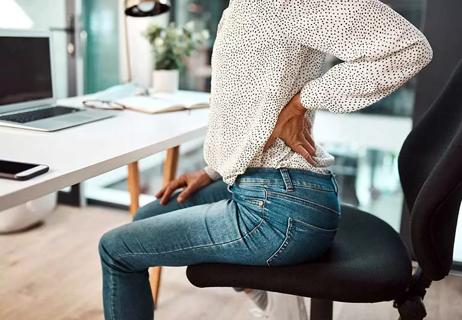Hanging upside down for any length of time may decompress the tension in your spine

Inversion tables — which suspend you upside down — are said to relieve back pain by taking pressure off your spine. Whether or not they work is another question.
Advertisement
Cleveland Clinic is a non-profit academic medical center. Advertising on our site helps support our mission. We do not endorse non-Cleveland Clinic products or services. Policy
Pain management specialist Haren Bodepudi, MD, explains what the science says and what you should know before you fall heels-over-head in the name of pain relief.
Inversion therapy, also known as spinal traction, is a spinal decompression technique that involves hanging upside down, usually with the help of an inversion table or chair. The theory behind it is simple: Hanging upside down allows gravity to briefly take the pressure off the nerves of your spine in your lower back and gives the squishy disks between your vertebrae room to relax.
When using an inversion table, lie down and strap yourself in. Then, slowly tip yourself backward, from a slight recline up to a 180-degree position, based on your comfort level. You’ll have control over how far back you’re inverted thanks to the angle adjustment system and manual handlebars that help with the speed of inversion.
“You can tailor the experience to your comfort and needs,” says Dr. Bodepudi. “However, follow the manufacturer’s instructions for your specific inversion table.”
Fans of inversion table therapy say it can relieve low back pain, muscle spasms and issues with sciatica. But research on inversion tables is up in the air.
“The research is mixed,” Dr. Bodepudi reports. “Some studies have found it can provide relief for some people, but others haven’t found any benefit.”
Advertisement
Here’s what we know about the potential benefits:
People who use inversion tables report relief for:
There’s limited quality evidence to support these claims. Most of the studies have been small. Current research suggests that using inversion tables as a complementary therapy could reduce the need for surgery even two years later. But there’s a need for higher-quality research with larger clinical studies.
The belief is that using this type of inversion therapy could potentially improve your flexibility when used for short periods of time. For starters, it can relieve pressure on the nerves and muscles in your back. By stretching those areas, it can help relieve muscle spasms and tension. Over time, the less pain you experience overall, the easier it might be to build and strengthen muscle.
If you think it’s worth a try, here’s how to safely use an inversion table:
Research shows inversion therapy can cause increased pressure in your skull because of the amount of blood that gets sent to your brain. This sudden increase in pressure can cause significant damage and could even be fatal. Talk to your healthcare provider before using an inversion table if you’re high-risk for, or have a history of, any of the following:
“I wouldn’t recommend inversion therapy by itself for treating back pain,” clarifies Dr. Bodepudi. “But it’s something you might try in combination with other therapies, like over-the-counter pain medications, physical therapy, yoga, and at-home stretching and core-strengthening exercises.”
In other words, inversion isn’t likely to be a magic bullet for your back woes. But as part of a multipronged strategy, it could help if you’re not at risk for further complications.
Advertisement
Learn more about our editorial process.
Advertisement

When your lower back hurts, stretching and staying active can be key to finding relief

Drinking alcohol can cause nerve pain, dehydration and weight gain, which can all lead to back pain

Your sleep position, immobility, mattress and underlying conditions can all cause morning back pain

Rest may be all you need to get rid of running-related lower back pain

It’s always a good idea to let a healthcare provider know about any back pain you’re experiencing, especially if it results from trauma or persists longer than three months

From physical and biofeedback therapy to nerve ablations and blocks, there are many nonsurgical options for managing back pain

Rest, physical therapy, acupuncture and nerve blocks are just a few ways to find relief

Get moving, use cold packs, and try yoga and stretches to ease back pain

Start having sex about 72 hours before ovulation, then at least every other day during your fertile window

Attachment theory suggests that your earliest relationships shape connections throughout your life

It isn’t a recognized mental health disorder, but research shows that problematic social media use can negatively affect your mental health, self-esteem and sleep